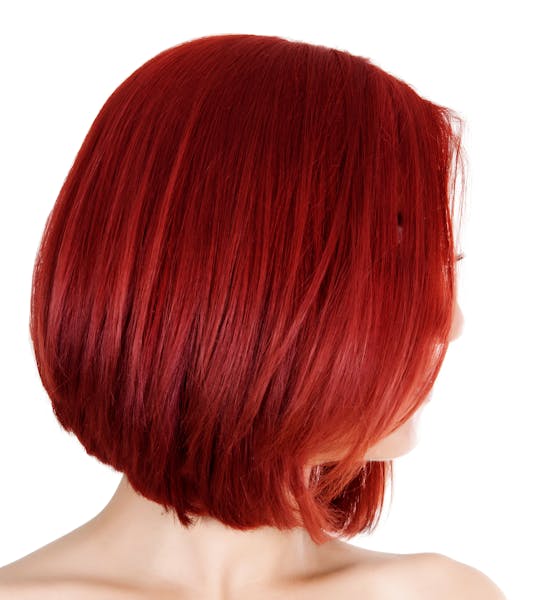Liz Zilka doesn't describe her hair as purple.
"I say magenta moving into purple," said the 55-year-old Minneapolis makeup artist and image consultant. "It fits me. I'm a giggly, fun, light person so it goes with my persona."
Not so long ago, brightly colored hair was little more than a Halloween gag. But the pop-star-fueled look (see Demi Lovado, Lady Gaga, Katy Perry, et al) was quickly adopted by twenty-somethings, teens and tweens, who used Kool-Aid or over-the-counter DIY dye kits.
Now the playful palette is being worn by adults — including some in middle-to-late age — who are opting for pale pastels or even neon-bright hues in streaks, tips, ombres or all-over coverage.
Women who've taken a turn for the bold say they're doing it not just to look stylish, but to demonstrate their creativity, showcase their personality and prove to employers that they're at the peak of their game.
"A different kind of customer is now seeking this," said Will O'Hara, who owns the Wave Salon in Uptown Minneapolis. "She's not a rebel, but she wants to show she's adventurous. My clients who are professional women prefer the pastels to the bold colors. It's still unnatural, but softer."
Erica Hanna doesn't worry about being soft.
In fact, the 35-year-old Bloomington woman's hair has been varying shades of blue, green, orange, red and yellow. "It's easier to say what colors I haven't had than list all the ones I have," she said.
Hanna, who operates her own video production agency, believes her look helps telegraph her brand.
"If you're expecting clients to think you're on the leading edge of creative, you'd better look it," she said. "My hair can be a calling card, a flag to wave, 'Hey, I'm the creative one.' "
Dyeing to be different
Self-expression — in appearance, dress and attitude — is a touchstone for the newest generation of employees.
"In the workforce, millennials want to bring their most authentic selves," said Lisa Walden, 29, head of marketing at Bridgeworks, a Minneapolis-based consulting firm. "Young adults are trying to stand out. Hair color no one else has hyper-customizes your persona."
Still, Walden isn't surprised to see that older workers are dyeing to be different, as well.
"As a generation, baby boomers see themselves as subversive, pushing back against the status quo. As they hit retirement, they're raging against aging. They're not going gently into that good night, not all moving to Florida and taking their Metamucil. A way to show that is with their hair color."
While hardly mainstream, offbeat hair colors are showing up in the workplace. That's because a more tolerant attitude has emerged among many managers of service employees, office workers and techies.
"Workplace culture is changing. Don't get me wrong, there are still plenty of industries where it's not going to fly. But even in fields where it's not accepted, you see pockets where it's fine," said Alison Green, a former executive who answers questions on her Ask a Manager website.
Green finds that the candy colors won't wash in the most traditional of industries, like banking, finance, law and accounting. But even companies that disapprove of the hues for employees working with clients might accept it on workers with little or no interaction with the public.
Of course, hair the color of an Easter egg is one thing when you have a job. Looking for work with an unconventionally colored coif might be something else entirely.
"You absolutely will get screened out of some jobs; it will be a deal-breaker," said Harry Urschel, a recruiter who works with an Eden Prairie-based job transition group. "Some people say, 'I want to be me and if they don't like me how I am, I don't want to work there.' But there's consequences to that attitude. I advise job seekers to play it straight. I don't know anyone who gets dinged for being too conservative with their appearance."
A temporary statement
Adopting a bold color doesn't necessarily have to look bold.
"There are coloring techniques that allow women to move from day to night," said Linda Schoenberg, a master stylist at Regency Beauty Institute's Studio Luma in St. Louis Park. "You can do a side part with the color underneath for work, then part it on the other side when you go out. The colorists who have the training and understand chemistry and hair structure can create anything."
Diana Grasselli doesn't go to a pro. She tints her hair herself, with semi-permanent colors she buys at a beauty supply store. The vocal music instructor and director of the Chanson Voice and Music Academy in St. Paul has gone from peach to hot pink to navy blue.
"When it fades, I try another color," she said. "I'm going with turquoise next."
Graselli, who turns 60 this month, said she finds her silver hair a clean canvas for the color. For younger women, colorists typically start with a bleaching product that allows the hair shafts to accept the dye. It's a multiple-step process that can quickly turn into a $100 appointment and require hours in a salon chair.
That hasn't deterred many women, especially those who have a vision for their hair. Shelley Rae, colorist at Honeycomb Salon in Minneapolis, said more clients are coming in with pictures — not of celebrities, but of nature — asking her to layer color to make their hair look like a sunset, a coral reef, even the Northern Lights.
Despite the cost and the creativity involved, a dye job needn't be a long-term commitment.
"It's not like tattoos. The beauty of this is you can change your mind," Rae said. "It's just hair."
Kevyn Burger is a Minneapolis-based freelance writer and a newscaster at BringMeTheNews.com.
Top 20 Global Concert Tours from Pollstar
4/20 grew from humble roots to marijuana's high holiday
Want to celebrate 4/20? Here are 33 weed-themed events across Minnesota.

Dining with altitude: Top-floor restaurants give new meaning to 'high roller' in Las Vegas

